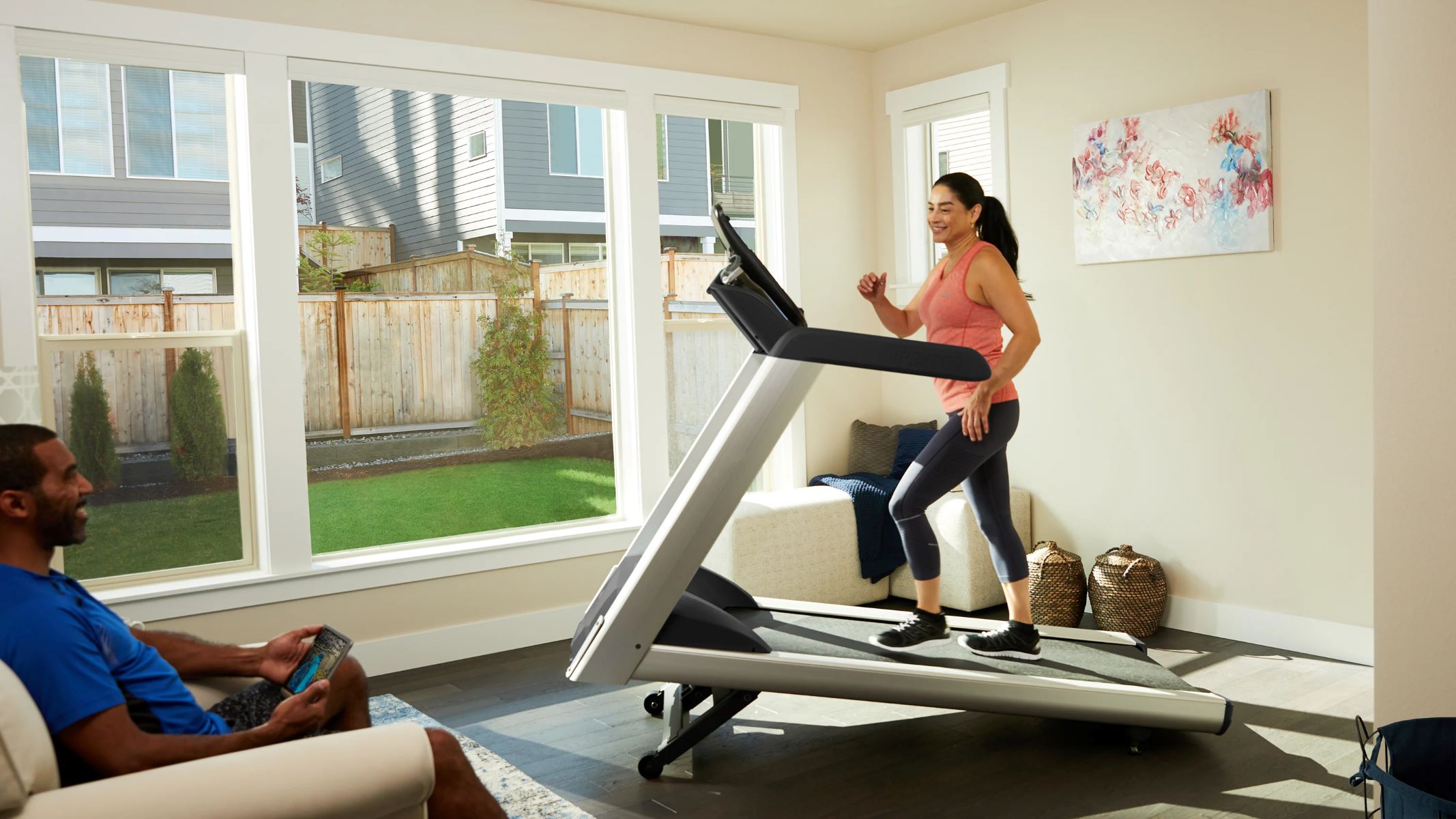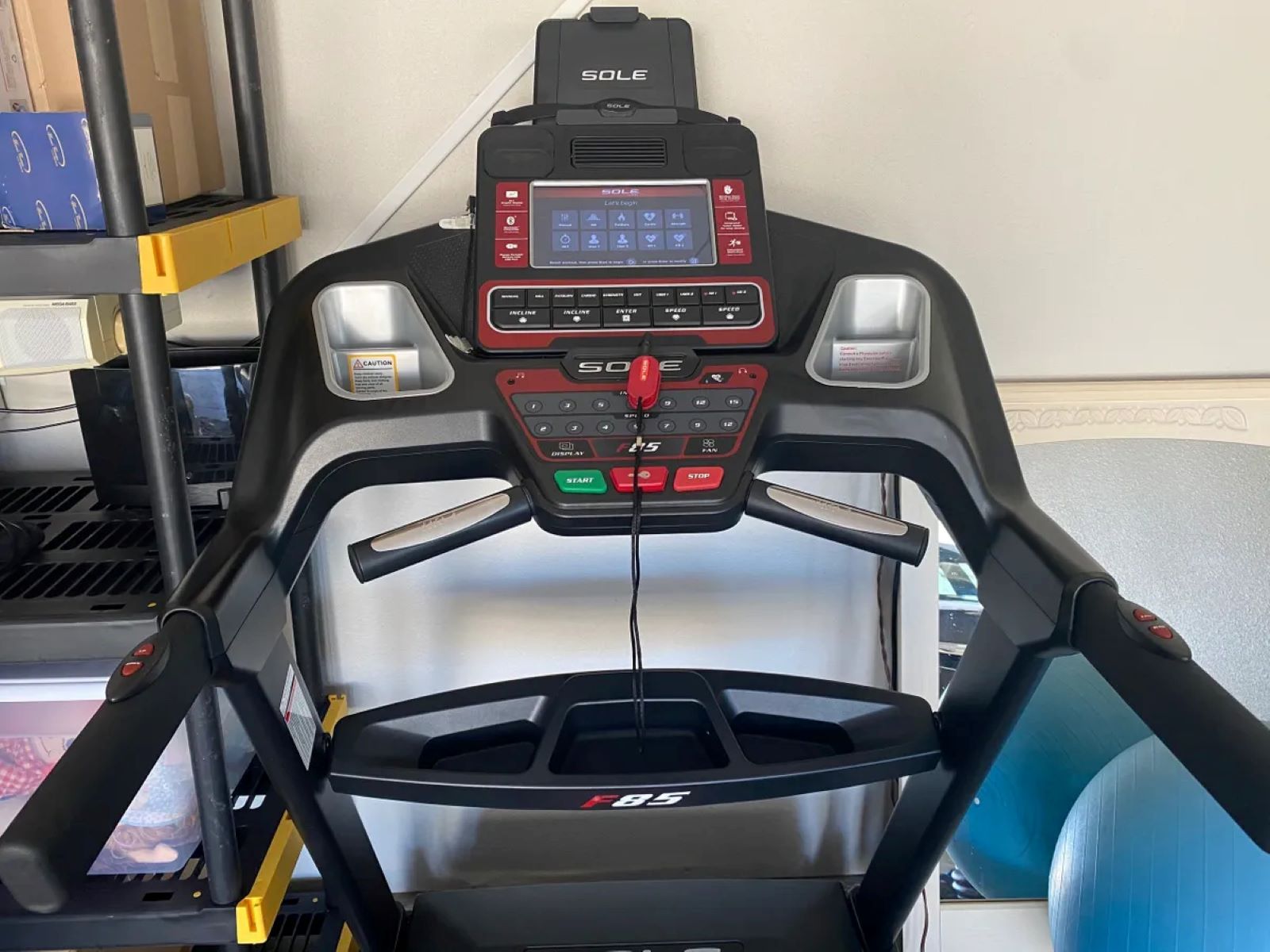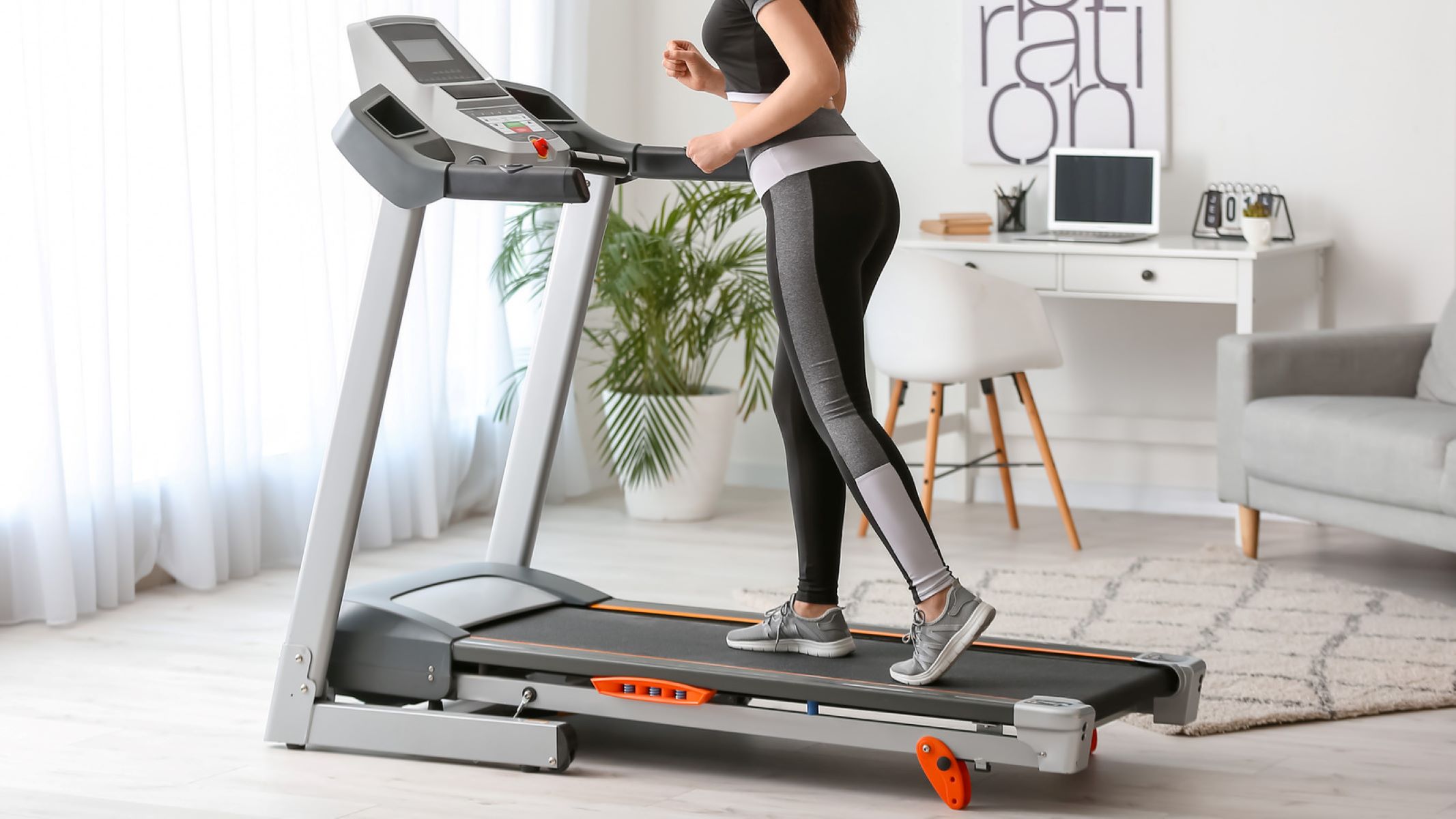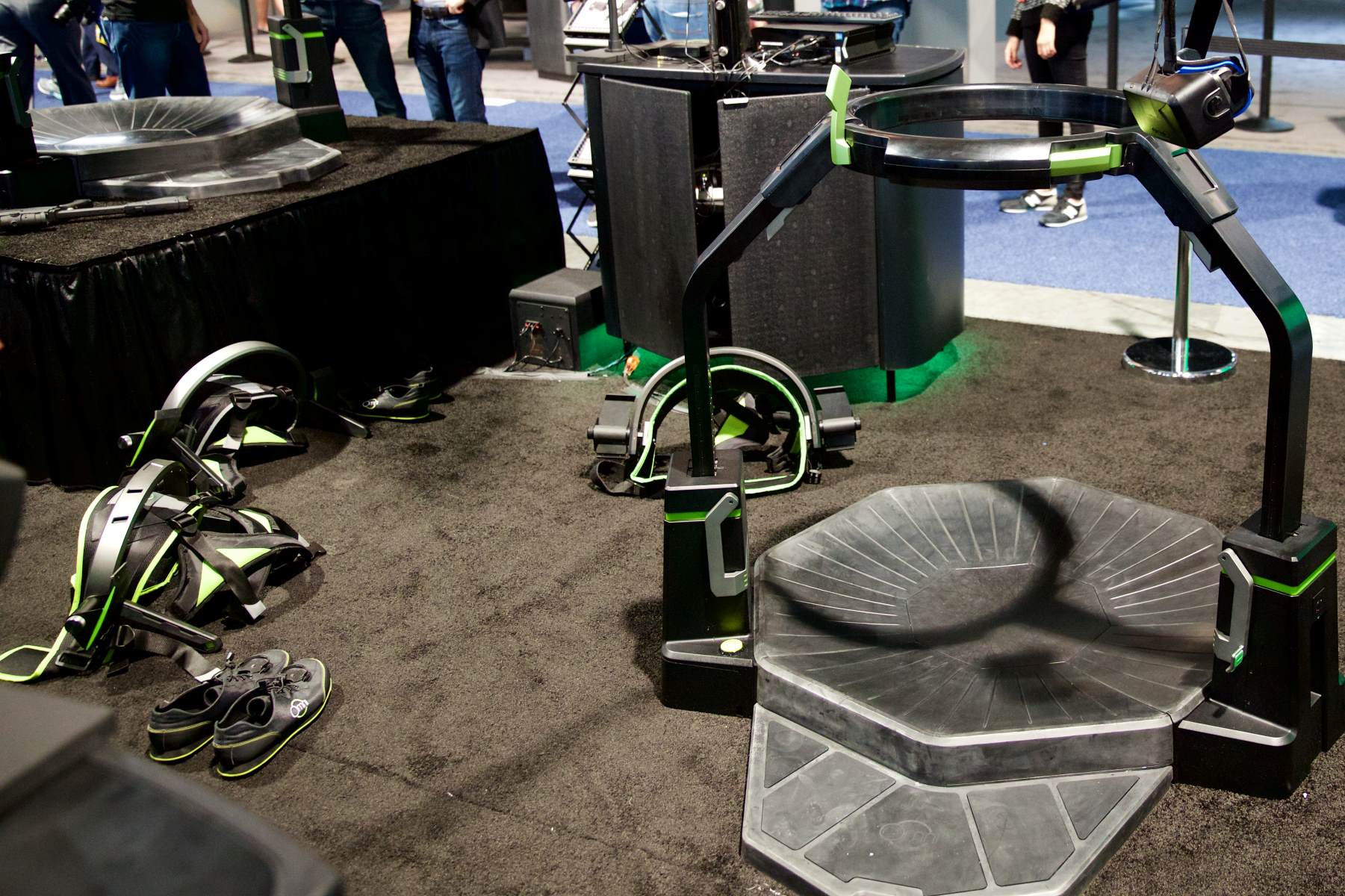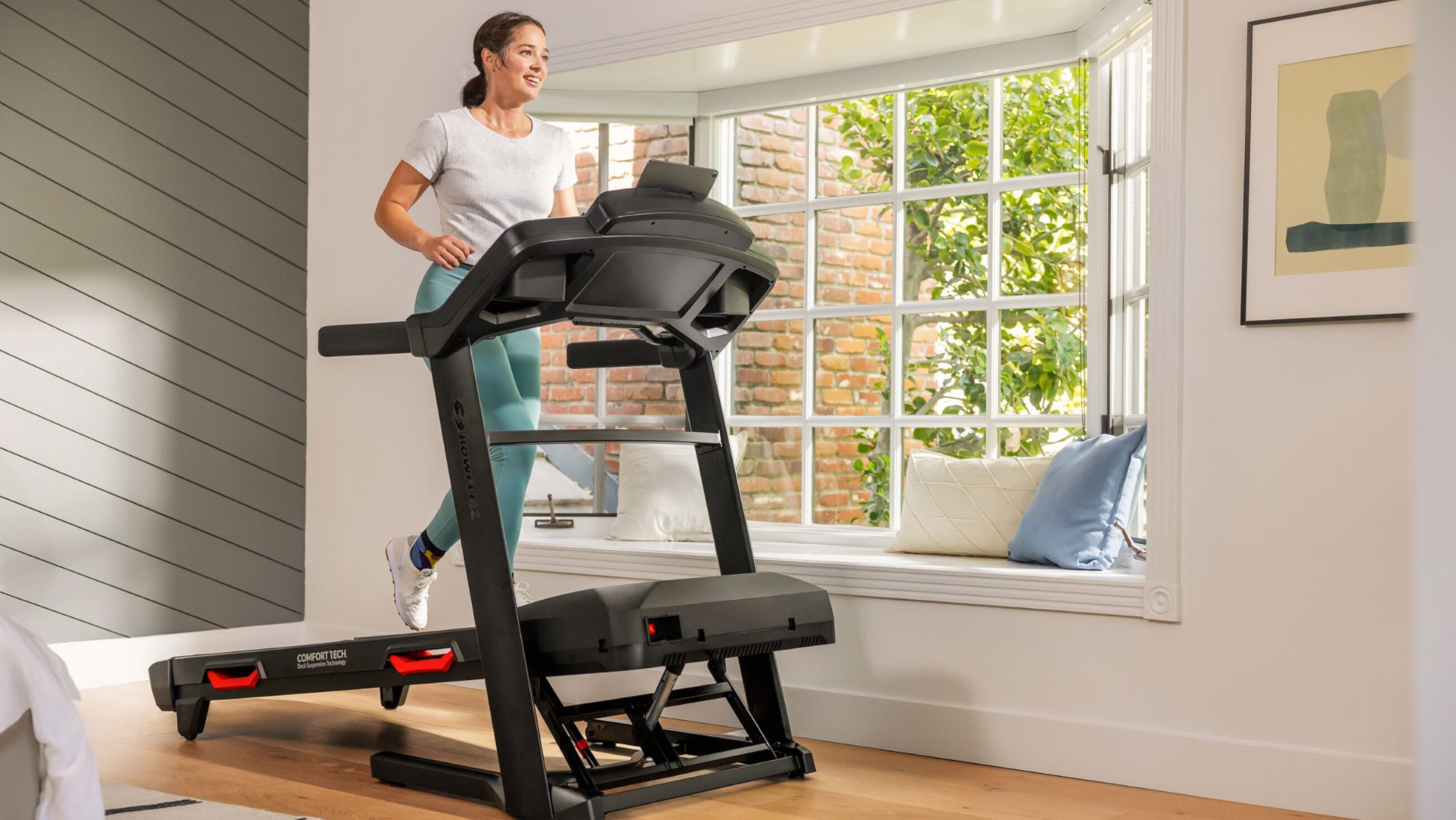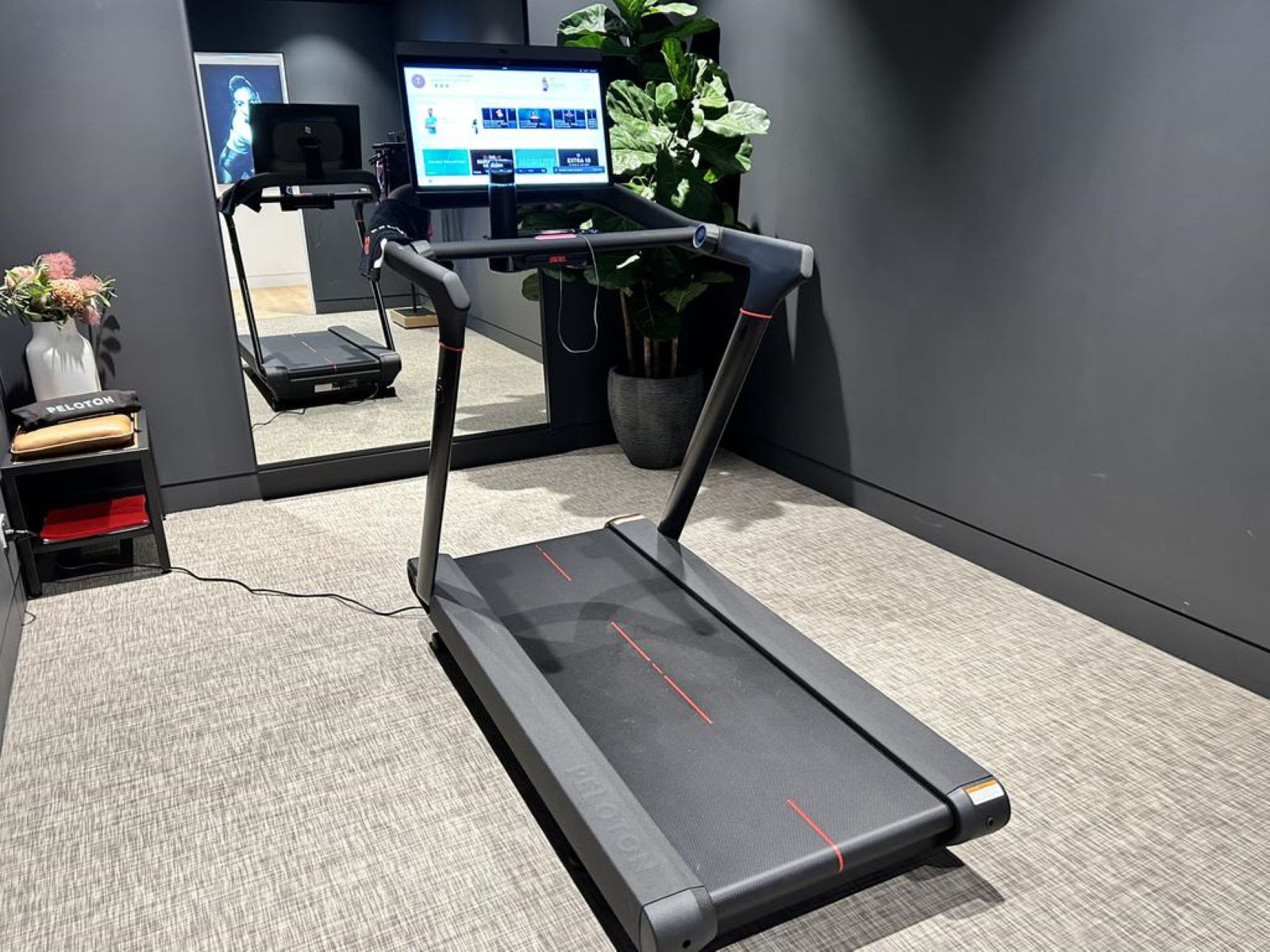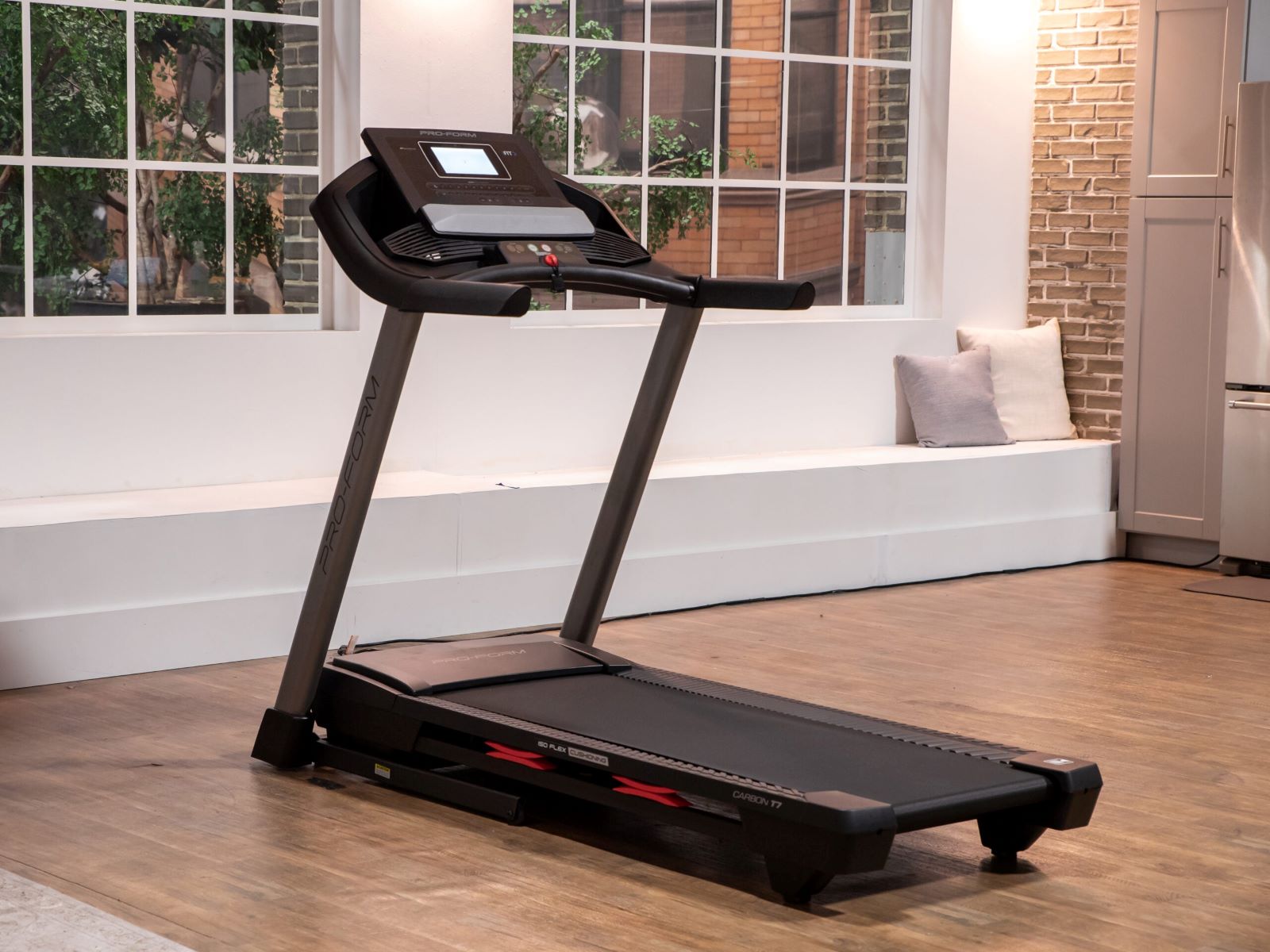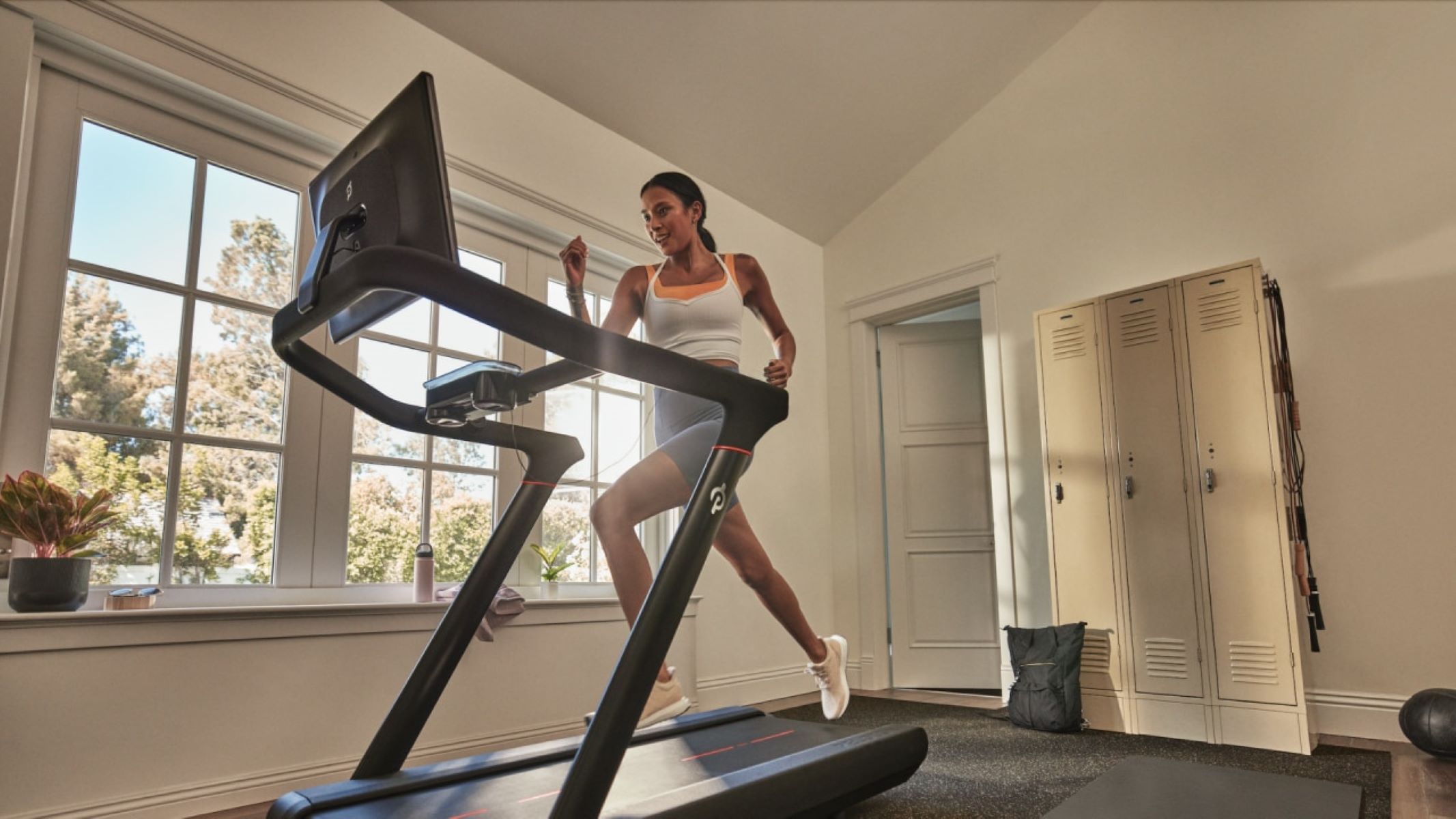

Featured
Why Is Running On A Treadmill Easier
Modified: August 21, 2023
Discover why running on a treadmill is easier with our featured article. Explore the benefits and find out how you can improve your fitness indoors.
Introduction
Running is a popular form of exercise that offers numerous health benefits. Whether you prefer running outdoors or hitting the gym, the use of a treadmill has become increasingly common in recent years. Many people claim that running on a treadmill feels easier compared to running outdoors. But why is that? Is it just a misconception, or is there some truth to this claim?
In this article, we will delve into the factors that make running on a treadmill feel easier for many individuals. We will explore the physiological, psychological, and environmental aspects that contribute to this perception. By understanding these factors, we can gain insights into the unique benefits and challenges of treadmill running and make an informed decision about how to incorporate it into our fitness routine.
Treadmill running provides a controlled and consistent environment that differs from outdoor running. The mechanics of running on a treadmill also vary slightly from running outdoors, which can influence the level of effort required. Moreover, the absence of external factors like wind resistance further contributes to the perceived ease of treadmill running. Additionally, psychological factors play a role in creating a mentally comfortable and stimulating experience on a treadmill.
By unpacking the reasons why running on a treadmill feels easier, we can gain a better understanding of the benefits and limitations of this form of exercise. So, let’s dive in and explore the physiology, impact on joints, control, lack of wind resistance, and psychological factors that contribute to the unique experience of running on a treadmill.
The Physiology of Treadmill Running
When it comes to running on a treadmill, the physiology of the exercise remains the same as running outdoors. The cardiovascular and muscular systems are engaged in a similar manner, resulting in improved endurance, cardiovascular fitness, and calorie burning. However, there are a few key differences that affect how the body responds to treadmill running.
One factor that can make treadmill running feel easier is the consistent and controlled surface. Unlike outdoor running, where terrain variations, such as inclines, declines, and uneven surfaces, can challenge the body, treadmill running offers a flat and predictable surface. This predictability allows the body to maintain a more efficient running form and reduces the risk of tripping or twisting an ankle.
In addition, treadmills often have shock absorption features that help cushion the impact on joints. This is especially beneficial for individuals with joint issues or those who are recovering from injuries. The cushioned surface can lessen the stress on the ankles, knees, and hips, ultimately making running on a treadmill feel less demanding on the body.
Furthermore, treadmill running allows for precise speed and incline control. You can easily adjust the speed and incline of the treadmill to suit your fitness level and personal goals. This flexibility is particularly advantageous for beginners who may need to start at a slower pace or individuals who want to incorporate high-intensity interval training into their workout routine.
It’s worth noting, however, that running on a treadmill may not engage the muscles in the same way as running outdoors. When running outdoors, there is a dynamic interaction with the ground, which requires activation of stabilizing muscles to maintain balance. On a treadmill, the belt moves beneath you, reducing the need for as much muscle activation. Therefore, while treadmill running may feel easier cardiovascularly, it may not provide the same level of muscle engagement as outdoor running.
In summary, the physiology of treadmill running is similar to outdoor running, but the controlled and consistent surface, shock absorption features, and adjustable settings make it feel easier. However, it is important to recognize that the lack of muscle activation from stabilizing movements may result in slightly less muscle engagement compared to running outdoors. Understanding these physiological differences can help individuals make informed decisions about incorporating treadmill running into their fitness routine and optimizing their overall training goals.
Impact and Joint Stress
One of the reasons why running on a treadmill feels easier is the reduced impact and joint stress compared to running outdoors. When running on a hard surface like concrete or asphalt, the joints, especially the knees and ankles, experience significant impact with each stride.
On the other hand, treadmills typically have a cushioned running surface that absorbs some of the shock. This cushioning helps to minimize the impact on joints, making treadmill running feel less taxing on the body. It can be particularly beneficial for individuals with joint conditions or those who are recovering from injuries.
Moreover, treadmills often offer adjustable incline settings, allowing you to simulate uphill and downhill running. Going uphill on a treadmill can engage different muscle groups and increase your heart rate without the same impact on your joints as running on a steep incline outdoors. This makes uphill treadmill running a great way to challenge yourself while minimizing the stress on your joints.
In addition to the cushioned surface and incline options, treadmills also provide a consistent and even running stride. Unlike running outdoors, where you may encounter uneven terrain, potholes, or other obstacles, treadmill running eliminates these variables. This consistent stride can reduce the risk of overstriding or landing awkwardly, further minimizing the impact on joints.
While the reduced impact and joint stress of treadmill running can indeed make it feel easier, it’s important to note that it may not fully replicate the demands of running outdoors. Running on uneven terrain, such as trails or grass, engages additional stabilizing muscles and requires more joint stability. Therefore, if you’re training for a specific outdoor event or race, it’s essential to incorporate outdoor running into your training plan to ensure you’re adequately prepared.
Overall, the reduced impact and joint stress of treadmill running contribute to the perception of it being easier. The cushioned surface, adjustable incline settings, and consistent stride help to minimize the stress on your joints while still providing an effective cardiovascular workout. However, it’s important to strike a balance between treadmill running and outdoor running to challenge your body in different ways and maintain well-rounded fitness.
Control and Consistency
One of the factors that make running on a treadmill feel easier is the level of control and consistency it provides compared to running outdoors. When running outside, you are at the mercy of various external factors such as weather conditions, terrain, and traffic. However, with a treadmill, you have greater control over your running environment.
Firstly, treadmills allow you to set a specific pace and maintain it throughout your run. This is especially useful for individuals who are working on maintaining a steady pace for longer distances or who are training for specific time goals. With the ability to program your desired speed, you can easily adjust and maintain a consistent and controlled running pace.
In addition to speed control, many treadmills offer preset workout programs that vary the intensity and incline, helping you to stay on track with your workout goals. These programs can simulate hill training, intervals, or endurance runs, providing variety and allowing you to challenge yourself in different ways. Having this level of control over your workout can make treadmill running feel more manageable and less daunting.
Another aspect where treadmills excel in providing control is the ability to monitor and track various metrics. Most modern treadmills come equipped with built-in heart rate monitors, distance trackers, calorie counters, and other performance metrics. This valuable feedback allows you to monitor your progress, track your workouts, and set personal goals. The visual display of these metrics can be motivating and encourage you to push your limits, ultimately enhancing your overall treadmill running experience.
Furthermore, running on a treadmill offers a consistent surface and running stride. Unlike outdoor running, where you may encounter uneven footing, potholes, or other obstacles, treadmill running eliminates these variables. This consistent and predictable running surface promotes a smoother stride and reduces the risk of injury. The consistent running motion can also facilitate a more efficient running form, resulting in a more comfortable and effortless experience.
In summary, the control and consistency provided by treadmill running contribute to the perception of it being easier. The ability to set and maintain a specific pace, program preset workout programs, and track performance metrics give you a sense of control and progression. Additionally, the consistent running surface and stride offered by treadmills enhance the overall running experience. However, it’s important to remember that challenging yourself with outdoor running is still crucial to improve adaptability and prepare for real-world running conditions.
Lack of Wind Resistance
One of the factors that contribute to the perception of treadmill running being easier is the lack of wind resistance. When running outdoors, the body must contend with the resistance created by the wind, which can significantly affect the perceived effort of the run. However, when running on a treadmill, this external resistance is eliminated, resulting in a smoother and seemingly easier running experience.
Wind resistance can be a major factor, especially when running at faster speeds or in windy conditions. The resistance created by the wind adds an additional challenge to the run, making it feel more strenuous. It requires the body to exert more effort to maintain the desired pace and can lead to increased fatigue. On the other hand, when running on a treadmill, you are running against still air, which eliminates the need to exert extra energy to overcome wind resistance.
The absence of wind resistance can make treadmill running feel significantly easier, particularly for those accustomed to running in windy conditions. This can be beneficial for individuals looking to work on their speed or endurance without the interference of external factors. It allows for a consistent pace and effort, making it easier to maintain the desired intensity throughout the run.
However, it’s important to note that the lack of wind resistance on a treadmill also means you’re not fully replicating the outdoor running experience. Outdoor running requires adapting to various weather conditions, including wind, which can provide a more realistic training stimulus. Therefore, it’s necessary to incorporate outdoor running into your exercise routine to ensure you are prepared for the challenges of running outdoors.
In summary, the lack of wind resistance when running on a treadmill contributes to the perception of it being easier. The absence of external resistance allows for a smoother and more consistent running experience, making it easier to maintain pace and effort. However, it’s important to balance treadmill running with outdoor running to ensure you are adequately prepared for the demands of running in different environmental conditions.
Psychological Factors
Besides the physiological aspects, there are also psychological factors that contribute to the perception of treadmill running being easier. These factors play a significant role in shaping our attitude and overall experience when running on a treadmill.
One key psychological factor is the element of distraction. Treadmills often come equipped with built-in entertainment systems such as TVs, music players, or virtual running apps. These distractions can take our focus away from the physical exertion of running, making the overall experience more enjoyable. By diverting our attention, we may be less aware of the physical effort, and as a result, treadmill running can feel easier and more pleasant.
Moreover, running on a treadmill provides a controlled and enclosed environment. For individuals who may feel self-conscious or intimidated by running in public spaces, the privacy of a treadmill can offer a sense of comfort and security. This can lead to a more relaxed mental state, making the running experience feel easier and less demanding.
Additionally, the use of visual feedback, such as metrics displayed on the treadmill screen, can have a positive impact on motivation. When we can visually see our progress, such as the distance covered or calories burned, it can provide a sense of accomplishment and encourage us to keep going. This positive reinforcement can boost our mood and make the running experience feel more enjoyable and effortless.
Furthermore, the ability to set specific goals and track our progress on a treadmill can enhance our motivation. Whether it’s beating a previous time, increasing the incline, or reaching a new distance milestone, having clear objectives can give us a sense of purpose and drive. This intrinsic motivation can make treadmill running feel more rewarding and less arduous.
Lastly, the controlled and consistent environment of a treadmill can create a sense of familiarity and routine. Treadmill running can become a part of our daily or weekly routine, providing a sense of structure and predictability. This routine can be comforting and make the running experience feel easier as our bodies adapt to the consistent workout setting.
In summary, psychological factors, such as distraction, sense of privacy, visual feedback, goal setting, and routine, contribute to the perception of treadmill running being easier. The ability to divert our attention, feel comfortable and secure, receive visual reinforcement, stay motivated through goals, and establish a routine all contribute to a positive mindset during treadmill running. By harnessing these psychological factors, we can make our treadmill running experience more enjoyable and effortless.
Conclusion
Running on a treadmill can indeed feel easier for several reasons. The controlled and consistent surface, reduced impact and joint stress, lack of wind resistance, and the presence of psychological factors collectively contribute to this perception. Understanding these factors provides valuable insights into the unique benefits and challenges of treadmill running.
The physiology of treadmill running differs slightly from running outdoors, with the controlled surface and shock absorption features reducing the impact on joints. While treadmill running may not engage the same stabilizing muscles as outdoor running, it offers a more controlled and predictable form of exercise.
Control and consistency are major advantages of treadmill running. With the ability to set and maintain a specific pace, adjust incline settings, and track performance metrics, individuals can have more control over their workout experience. Additionally, the lack of wind resistance and distractions on a treadmill make it easier to focus and maintain a steady effort.
Psychological factors, such as distraction, privacy, visual feedback, goal setting, and routine, play a significant role in shaping our perception of treadmill running. By leveraging these factors, individuals can enhance their enjoyment and motivation during treadmill workouts.
However, it is important to note that while running on a treadmill offers various benefits, it should not replace outdoor running entirely. Outdoor running provides unique challenges, including uneven terrain, wind resistance, and adaptation to changing conditions. Incorporating both treadmill running and outdoor running into a well-rounded fitness routine allows for a more comprehensive and balanced approach to training.
In conclusion, the perception of treadmill running being easier stems from a combination of physiological, psychological, and environmental factors. Understanding these factors allows individuals to make informed decisions about incorporating treadmill running into their fitness routine based on their specific goals and preferences. Whether you choose to run outdoors or on a treadmill, the most important thing is to find a form of exercise that you enjoy and that supports your overall health and well-being.
